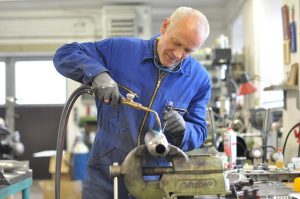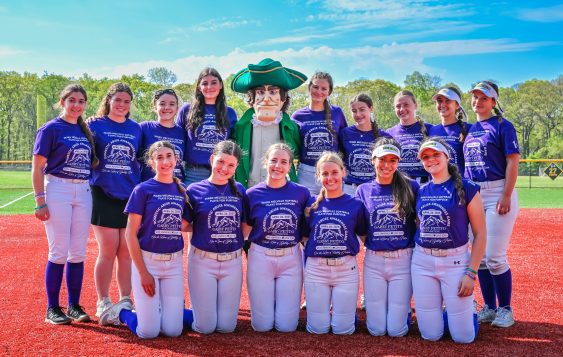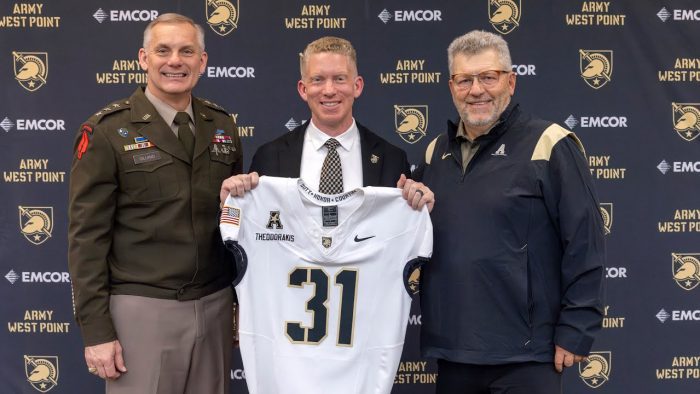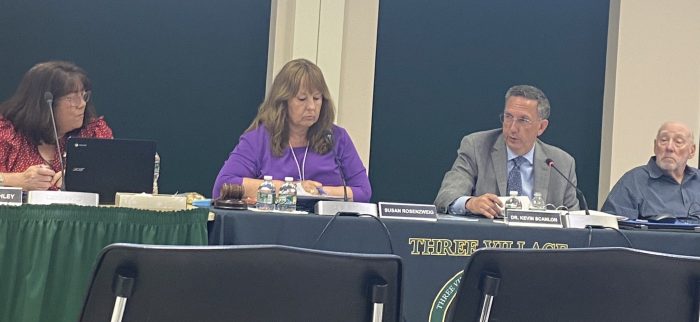Island Harvest Food Bank, the National Association of Letter Carriers (NALC), and the United States Postal Service (USPS) are once again in a united front for the annual Stamp Out Hunger® food drive, the nation’s most extensive single-day food collection campaign on Saturday, May 10.
 At a recent kickoff rally at Island Harvest’s Melville headquarters before a group of postal union workers, corporate sponsors, and food bank staff and supporters, Samantha Morales, founder of Branches Long Island, a Middle Island-based social services organization that helps people in need, relayed a story about a first-time client coming in for food assistance.
At a recent kickoff rally at Island Harvest’s Melville headquarters before a group of postal union workers, corporate sponsors, and food bank staff and supporters, Samantha Morales, founder of Branches Long Island, a Middle Island-based social services organization that helps people in need, relayed a story about a first-time client coming in for food assistance.
“A woman named Maria came in holding a baby in one arm and a grocery list in the other. Her husband had been laid off, and their savings were completely gone. She looked exhausted yet determined and said, ‘I never thought I’d need help like this, but my baby needs to eat.’” Ms. Morales said that because of food donations from efforts like Stamp Out Hunger, Maria wasn’t turned away in her time of need, and she was given fresh produce, canned goods, and formula for her baby. As Maria left, she hugged a volunteer, broke down and said, “You gave me a lifeline today.” In concluding her remarks, Ms. Morales stated, “Every can, every box and every bag collected during this campaign helps real people right here on Long Island.”
According to Randi Shubin Dresner, president & CEO of Island Harvest, the need for food assistance on Long Island has never been greater.
“The need among Long Island families is alarming, making your contribution to Stamp Out Hunger more important than ever,” said Shubin Dresner. She highlights that the organization distributed a record 18.3 million pounds of food last year and is forecasted to distribute 20 million pounds this year.
“With increased costs at the grocery store, coupled with the region’s high cost of living and continued economic uncertainty, more Long Islanders urgently need supplemental food support. We are calling on the responsibility and generosity of all Long Islanders to donate what they can by leaving nonperishable food items in a bag next to your mailbox before the regularly scheduled mail delivery on Saturday, May 10 for your letter carrier to pick up and help ensure it gets onto the tables of our Long Island neighbors in need,” she added.
Nonperishable food includes canned goods, cereal, pasta, rice, boxed juices, and shelf-stable milk (no prepared food or food or juices in glass containers). In addition, personal care items such as toothpaste, soap, shampoo, deodorant, and disposable diapers are gratefully accepted. All donations collected will help replenish Island Harvest’s network of community-based food pantries, soup kitchens and other emergency feeding programs in communities in Nassau and Suffolk counties.
“Every donation, no matter the size, will help countless Long Islanders who may be struggling to put food on their tables — even a can of soup can be a much-needed meal for people who are hungry,” added Ms. Shubin Dresner, “We’ve always been touched by the generosity of Long Islanders to help their neighbors in need, and we are confident that they will once again step up and support this year’s Stamp Out Hunger food drive.”
“The National Association of Letter Carriers Branch 6000 and the United States Postal Service are excited to partner with Island Harvest again this year for your 33rd annual Stamp Out Hunger food collection,” said Tom Siesto, Executive Vice President of NALC Branch 6000. “The members of Branch 6000 and the employees of the United States Postal Service often see firsthand the widespread issue of food insecurity on Long Island and are thrilled to take part in this very important campaign and give back to the local communities they serve.”
Since its inception in 1993, the Stamp Out Hunger food drive, held on the second Saturday in May, has collected approximately 1.9 billion pounds of food for those in need across the United States. Input from food banks and pantries suggested that late spring would be the best time because most food banks start running out of the donations received during the Thanksgiving and Christmas holidays by that point in the year, according to the NALC.
Last year, generous Long Islanders donated 382,175 pounds of food, supplementing 577,000 meals. Island Harvest hopes to exceed 500,000 pounds of food during this year’s Stamp Out Hunger food collection campaign.
This year’s Stamp Out Hunger collection campaign on Long Island is generously supported by presenting sponsor National Grid (lead sponsor), JPMorganChase, Dime Community Bank, FourLeaf Federal Credit Union, IPRO Healthcare, Leviton, M&T Bank, Nonna’s Garden, Petro Home Services, and Stop & Shop.






































